In today’s fast-paced business environment, organizations must constantly evolve to stay competitive. However, change efforts can have far-reaching impacts across the entire system. No change to one part of an organization can ever be made without potential organizational impacts. This is where human-centered design (HCD) comes in, offering a holistic approach that prioritizes the needs and experiences of the workforce.
What is Human-Centered Design?
 Human-centered design (HCD) is a methodology originally developed for technology and product development. It focuses on creating solutions that meet users’ actual needs through empathy, iterative testing, and collaborative problem-solving. In the context of change management, HCD emphasizes understanding and addressing the needs, behaviors, and motivations of employees affected by change.
Human-centered design (HCD) is a methodology originally developed for technology and product development. It focuses on creating solutions that meet users’ actual needs through empathy, iterative testing, and collaborative problem-solving. In the context of change management, HCD emphasizes understanding and addressing the needs, behaviors, and motivations of employees affected by change.
Why Human-Centered Design in Change Management?
Traditional change management often falls short because it designs initiatives in a vacuum, without adequate input from those who will be most affected. Human-centered design bridges this gap by involving employees in every stage of the change process. This approach ensures that changes are not only effective but also embraced by the workforce. Here’s why HCD is crucial for change management:
- Empathy: By understanding the workforce’s perspectives, change leaders can design initiatives that genuinely address their concerns and aspirations, addressing a lot of potential resistance before it even becomes an issue.
- Collaboration: Involving employees in the design process fosters a sense of ownership and commitment and ensures that small but significant workforce challenges are addressed in the change implementation plans.
- Iterative Testing: Continuous feedback and iteration lead to solutions that are refined and validated by those who will use them. If you have a product or technology view, you may wonder how this is possible when dealing with intangible change, but it can include things like experiential learning, living labs, or live demos, letting the workforce get a feel for the future before going all in on the change.
Overview of the Human-Centered Design Process
The HCD process can be broken down into three main phases: Inspiration, Ideation, and Implementation.
Inspiration: This phase involves immersing yourself in the experiences of the workforce to understand their needs, challenges, and motivations. Techniques such as interviews, surveys, and observation are used to gather insights.
Ideation: Based on the insights gathered, brainstorming sessions are held to generate a wide range of ideas and potential solutions. This phase encourages creativity and open-mindedness, allowing for innovative approaches to emerge.
Implementation: The most promising ideas are prototyped and tested in real-world scenarios. Feedback is gathered and used to refine the solutions until they meet the needs of the workforce effectively.
Actionable Tips for Applying HCD in Change Management
Engage Early and Often: Start involving employees from the very beginning. Use interviews, focus groups, and surveys to gather their input and keep them engaged throughout the process.
Create Empathy Maps: Develop empathy maps to visualize the experiences of different employee groups. This tool helps in understanding their thoughts, feelings, and actions, providing a foundation for designing meaningful change initiatives.
Prototype and Test: Don’t wait for a perfect solution. Develop quick prototypes and test them with a small group of employees. Gather feedback and iterate until the solution is refined.
Foster a Collaborative Culture: Encourage open communication and collaboration across all levels of the organization. Create forums for employees to share their ideas and feedback continuously.
Use Storytelling: Communicate the vision and benefits of the change through storytelling. Share stories of how the changes will positively impact employees’ daily work and overall experience.
Conclusion
Human-centered design offers a powerful framework for change management, ensuring that initiatives are grounded in the workforce’s real needs and experiences. By engaging employees early, fostering collaboration, and iteratively testing solutions, organizations can design change efforts that are effective, sustainable, and embraced by all. Embracing HCD not only mitigates the risks of change but also empowers the workforce to be active participants in shaping their future.
If you’d like to learn more about HCD and design thinking, you can check out Design Kit, a resource on HCD from Ideo.org. There are great introductory videos as well as practical exercises for each phase of the process, and even case studies. Evolve is not associated with Design Kit.



